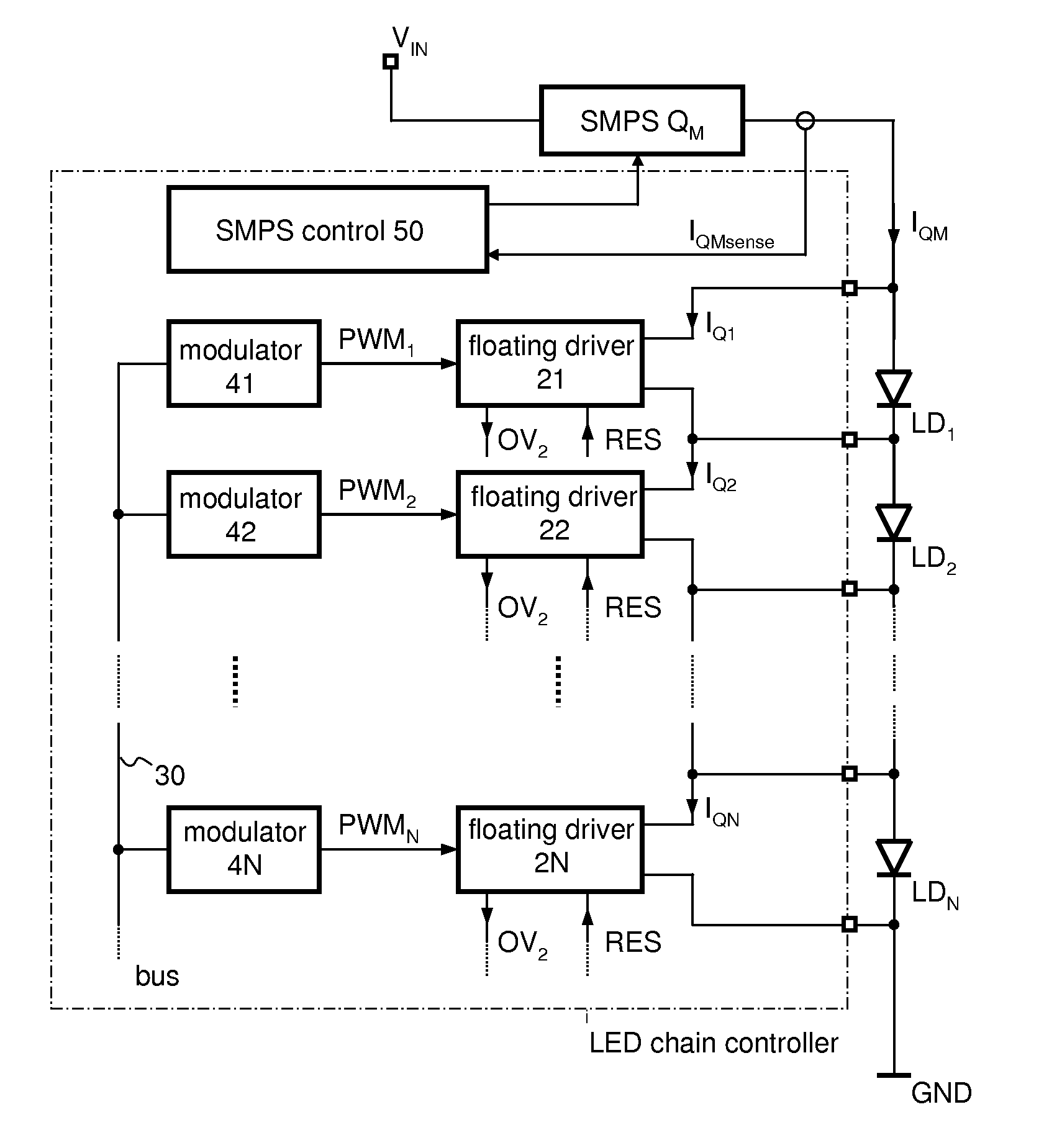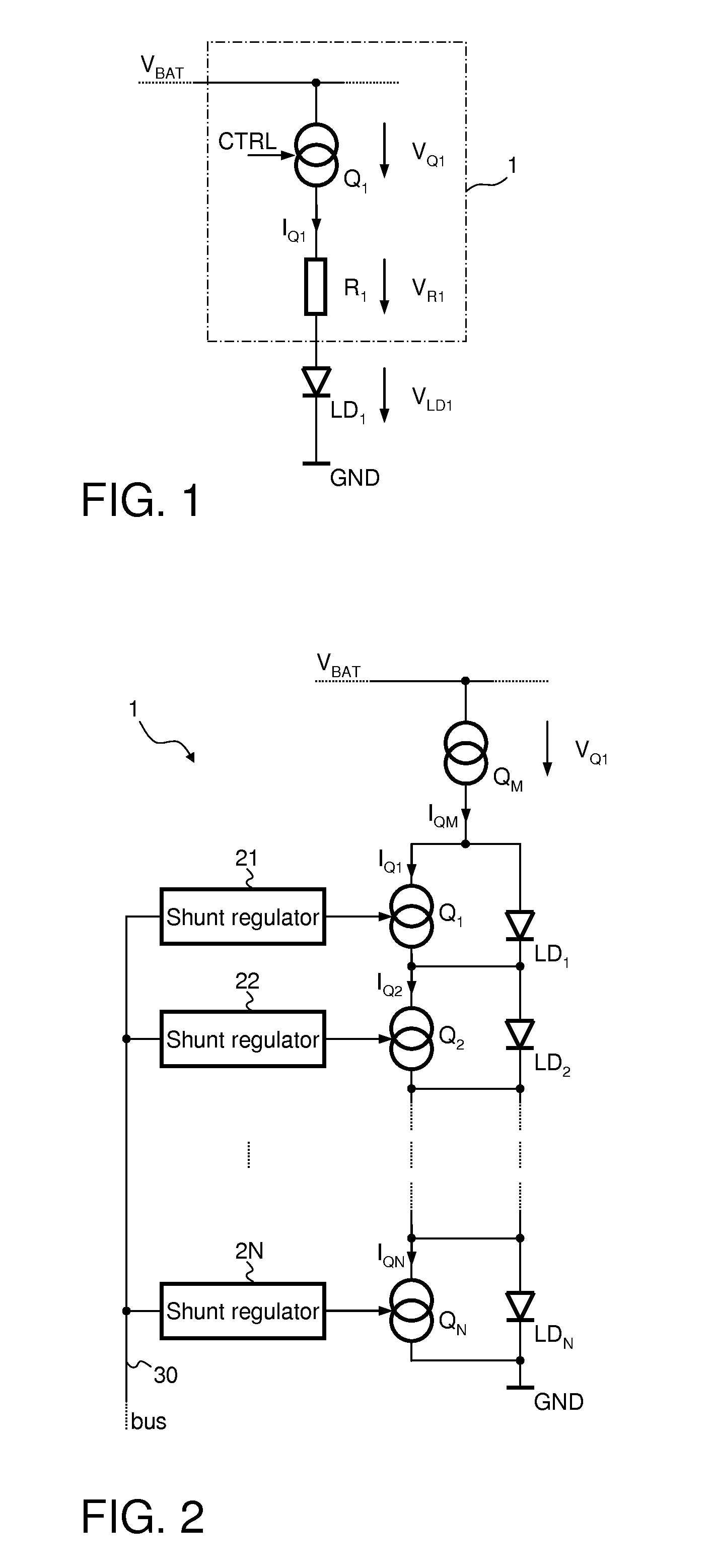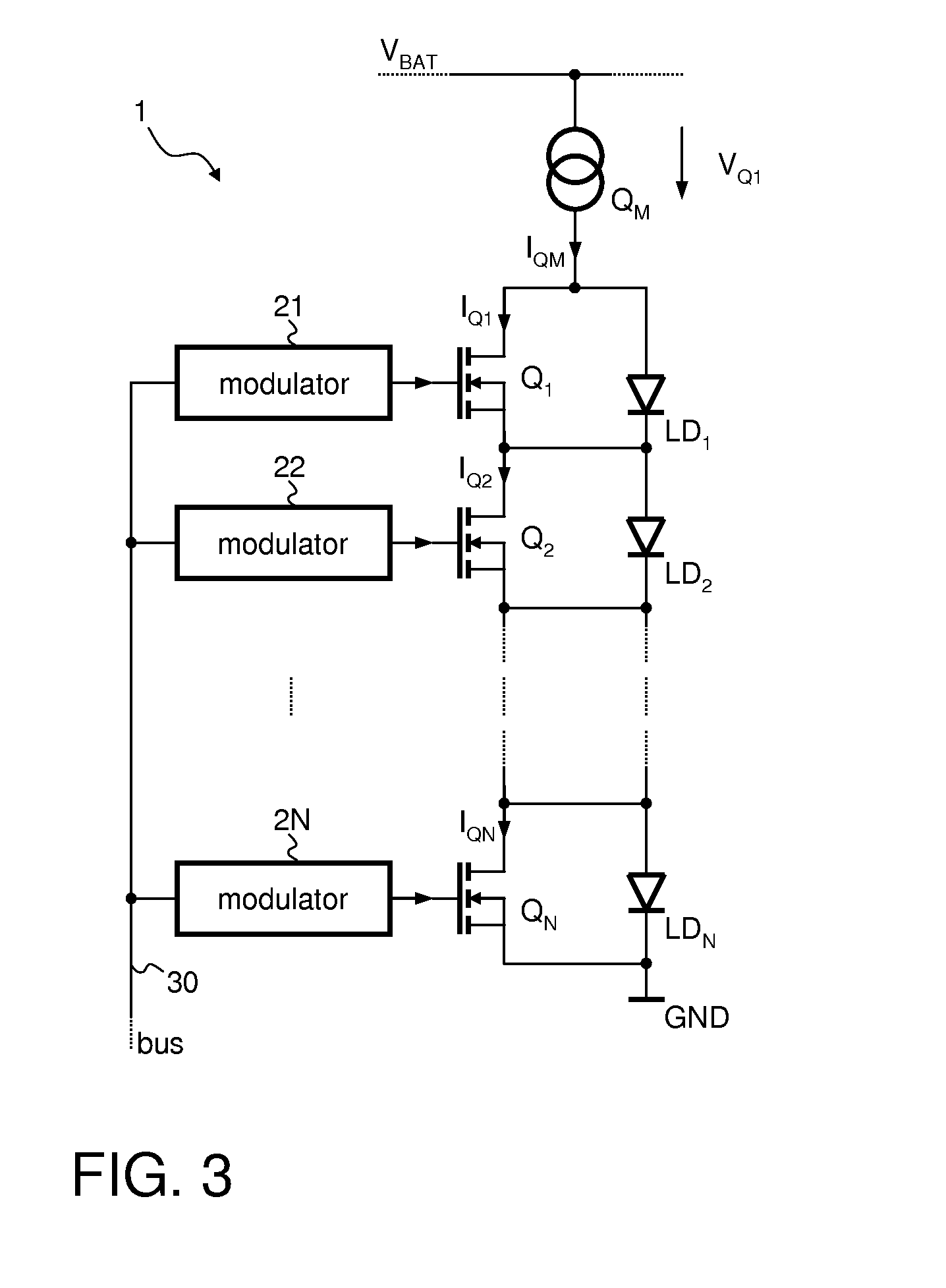Driver Circuit for Efficiently Driving a Large Number of LEDs
- Summary
- Abstract
- Description
- Claims
- Application Information
AI Technical Summary
Benefits of technology
Problems solved by technology
Method used
Image
Examples
Embodiment Construction
[0019]FIG. 1 illustrates a commonly used driver circuit 1 for driving a light emitting diode LD1. The driver circuit 1 comprises a current source Q1 and an optional series resistor R1 both connected in series to the light emitting diode LD1. In the present example, the current source Q1 is supplied from a first supply potential VBAT that is provided, for example, by an automotive battery. The cathode of the light emitting diode LD1 is connected to a reference supply terminal providing a reference supply potential, e.g., ground potential GND. However, the positions of the diode LD1, the optional resistor R1, and the current source Q1 may be interchanged arbitrarily.
[0020]In order to adjust the brightness of the light emitting diode LD1, the current source Q1 may be controllable, that is, the load current IQ1 passing through the current source Q1 is dependent on a control signal CTRL received by the current source Q1.
[0021]The power losses PD dissipated in the driver circuit may be ca...
PUM
 Login to View More
Login to View More Abstract
Description
Claims
Application Information
 Login to View More
Login to View More - R&D
- Intellectual Property
- Life Sciences
- Materials
- Tech Scout
- Unparalleled Data Quality
- Higher Quality Content
- 60% Fewer Hallucinations
Browse by: Latest US Patents, China's latest patents, Technical Efficacy Thesaurus, Application Domain, Technology Topic, Popular Technical Reports.
© 2025 PatSnap. All rights reserved.Legal|Privacy policy|Modern Slavery Act Transparency Statement|Sitemap|About US| Contact US: help@patsnap.com



